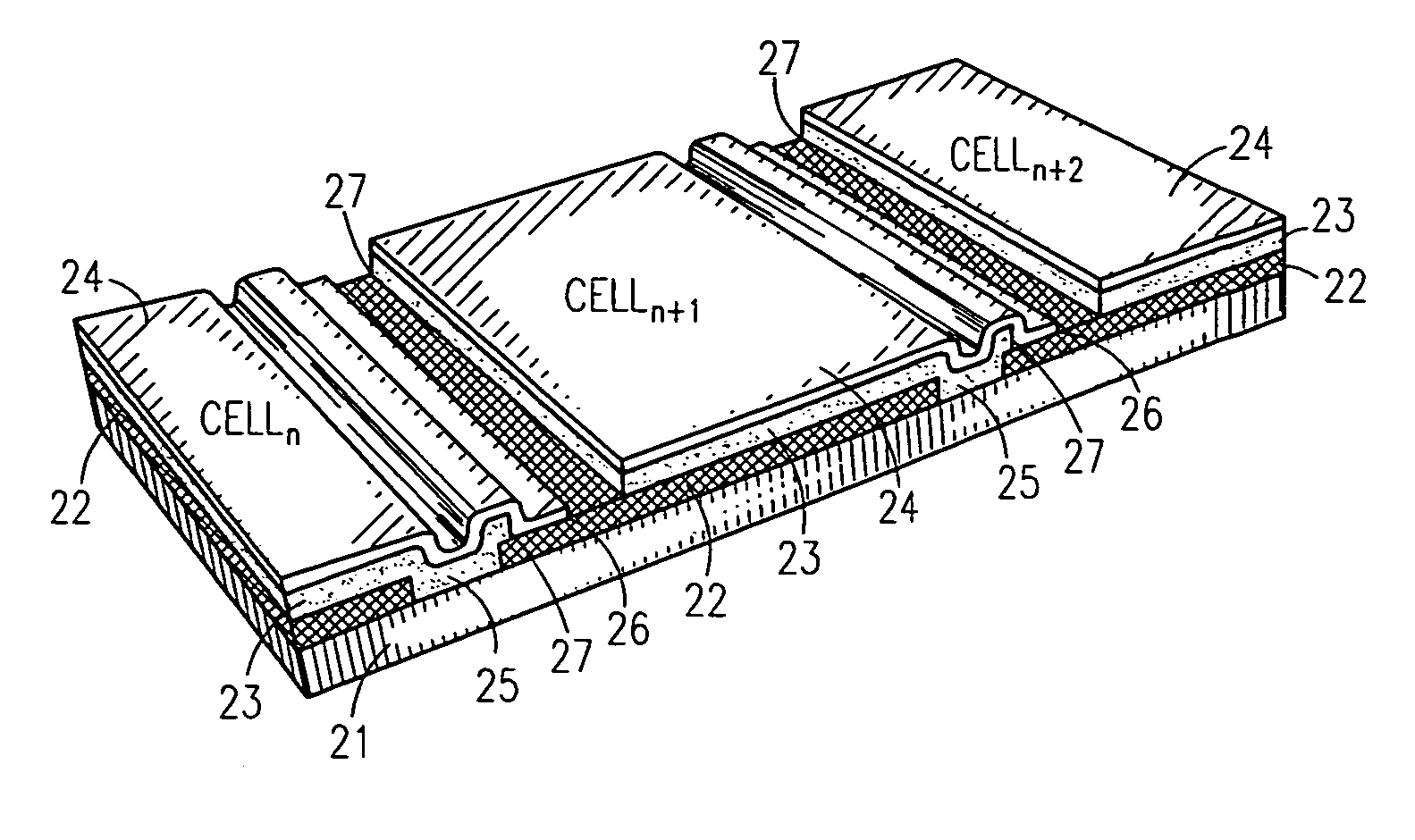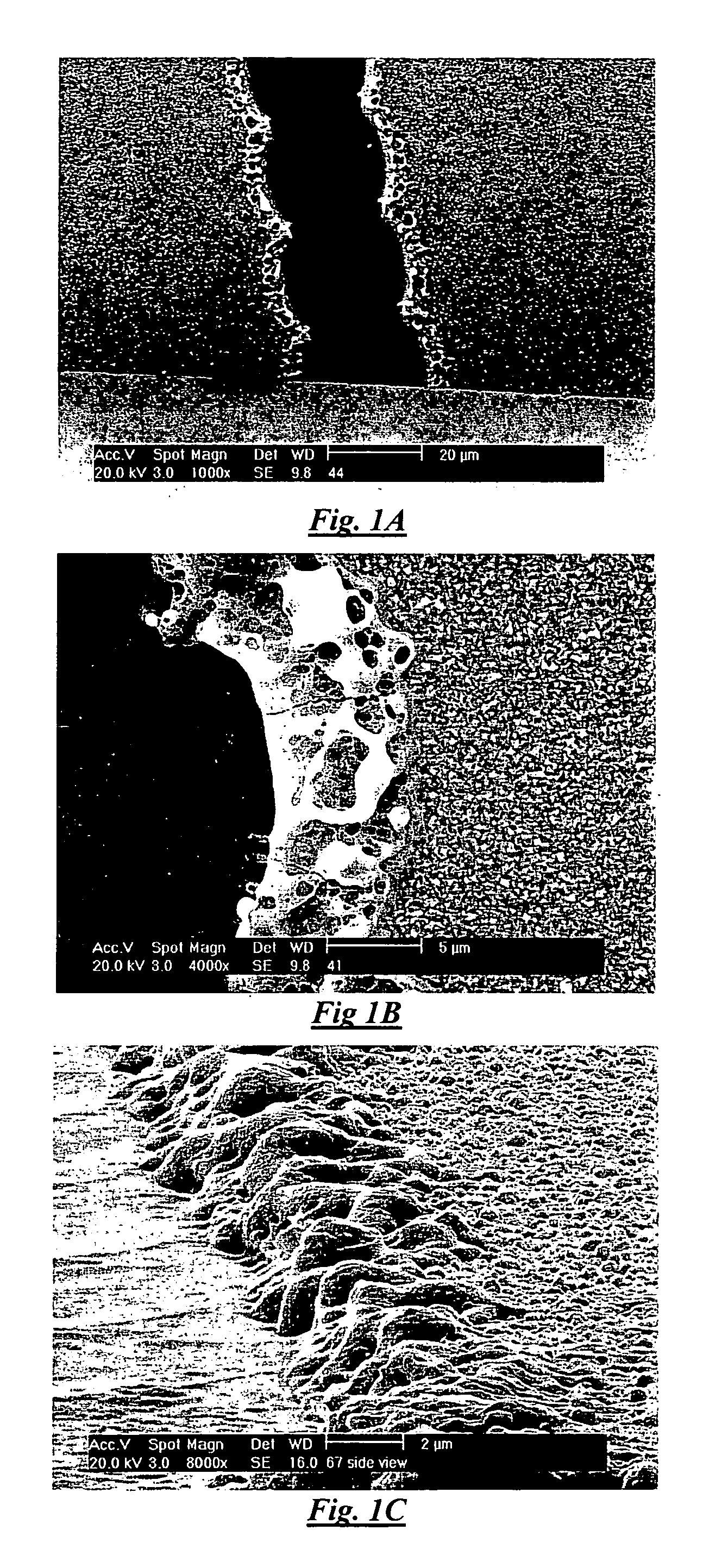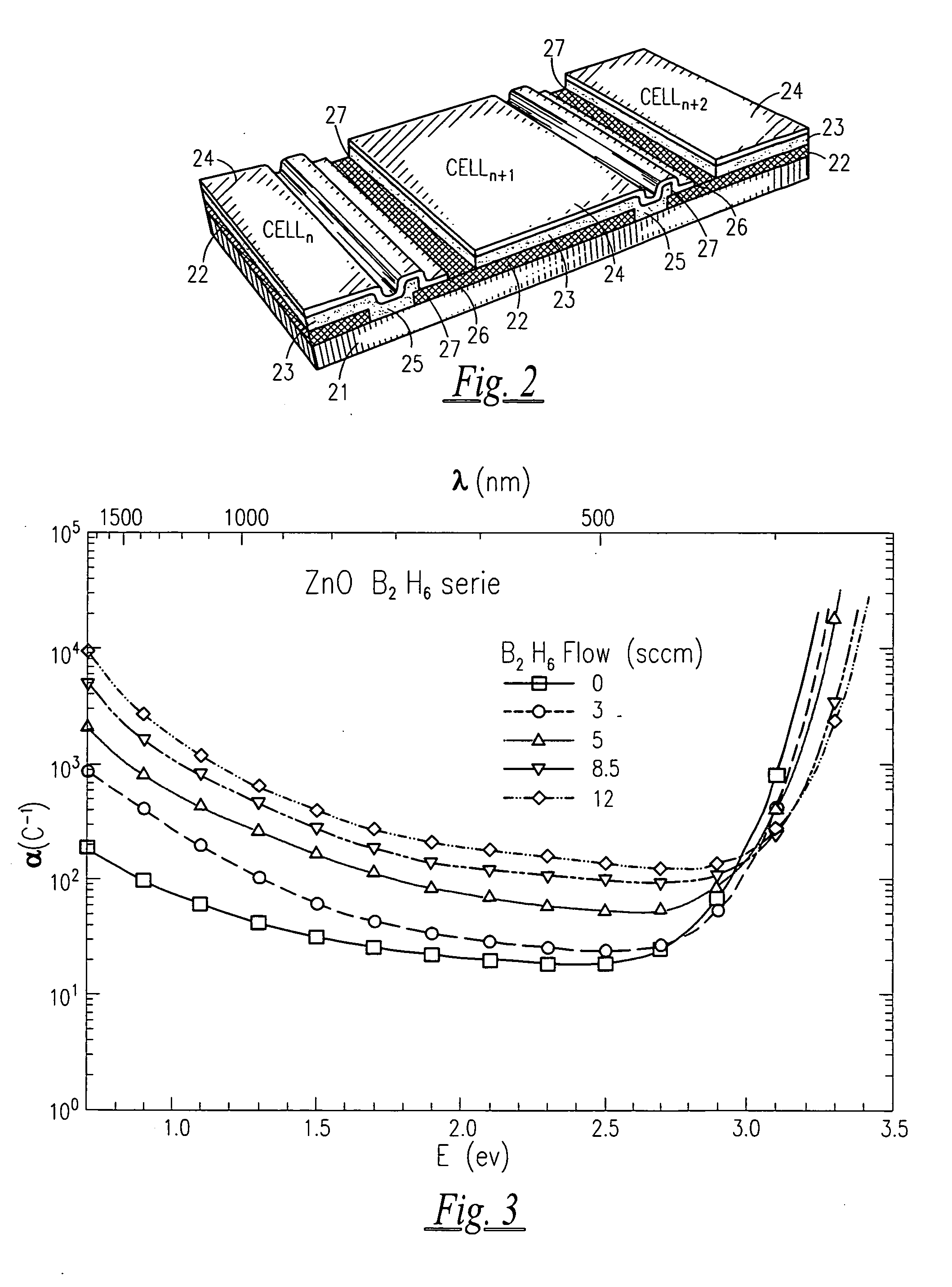Laser structuring for manufacture of thin film silicon solar cells
a technology of solar cells and lasers, applied in the field of solar cells, can solve the problems of high module fill factor, inconvenient scribing of zno tco layer, and inability to use 1064 nm lasers for functioning,
- Summary
- Abstract
- Description
- Claims
- Application Information
AI Technical Summary
Benefits of technology
Problems solved by technology
Method used
Image
Examples
example application
[0056] Specifications of an applied UV-laser (Coherent AVIA 355-X used successfully according to the invention are:
Wavelength:355 nmPower:10.0 Watt at 60 kHzPulse frequency range:1 Hz to 100 kHzPulse length:M2:Polarization:>100:1, horizontalBeam diameter (exit):3.5 mm at 1 / e2Beam divergence at full angle:
[0057] ZnO layers for the sample were about 2 μm thick deposited on glass by LP-CVD process.
[0058] Laserscribing or layer structuring processes for coated substrates with ZnO deposited by other methods (sputtering, etc.) or other TCO materials with similar absorption characteristics to ZnO could also benefit from the described process of the invention as well.
PUM
| Property | Measurement | Unit |
|---|---|---|
| wavelength | aaaaa | aaaaa |
| wavelength | aaaaa | aaaaa |
| width | aaaaa | aaaaa |
Abstract
Description
Claims
Application Information
 Login to View More
Login to View More - R&D
- Intellectual Property
- Life Sciences
- Materials
- Tech Scout
- Unparalleled Data Quality
- Higher Quality Content
- 60% Fewer Hallucinations
Browse by: Latest US Patents, China's latest patents, Technical Efficacy Thesaurus, Application Domain, Technology Topic, Popular Technical Reports.
© 2025 PatSnap. All rights reserved.Legal|Privacy policy|Modern Slavery Act Transparency Statement|Sitemap|About US| Contact US: help@patsnap.com



